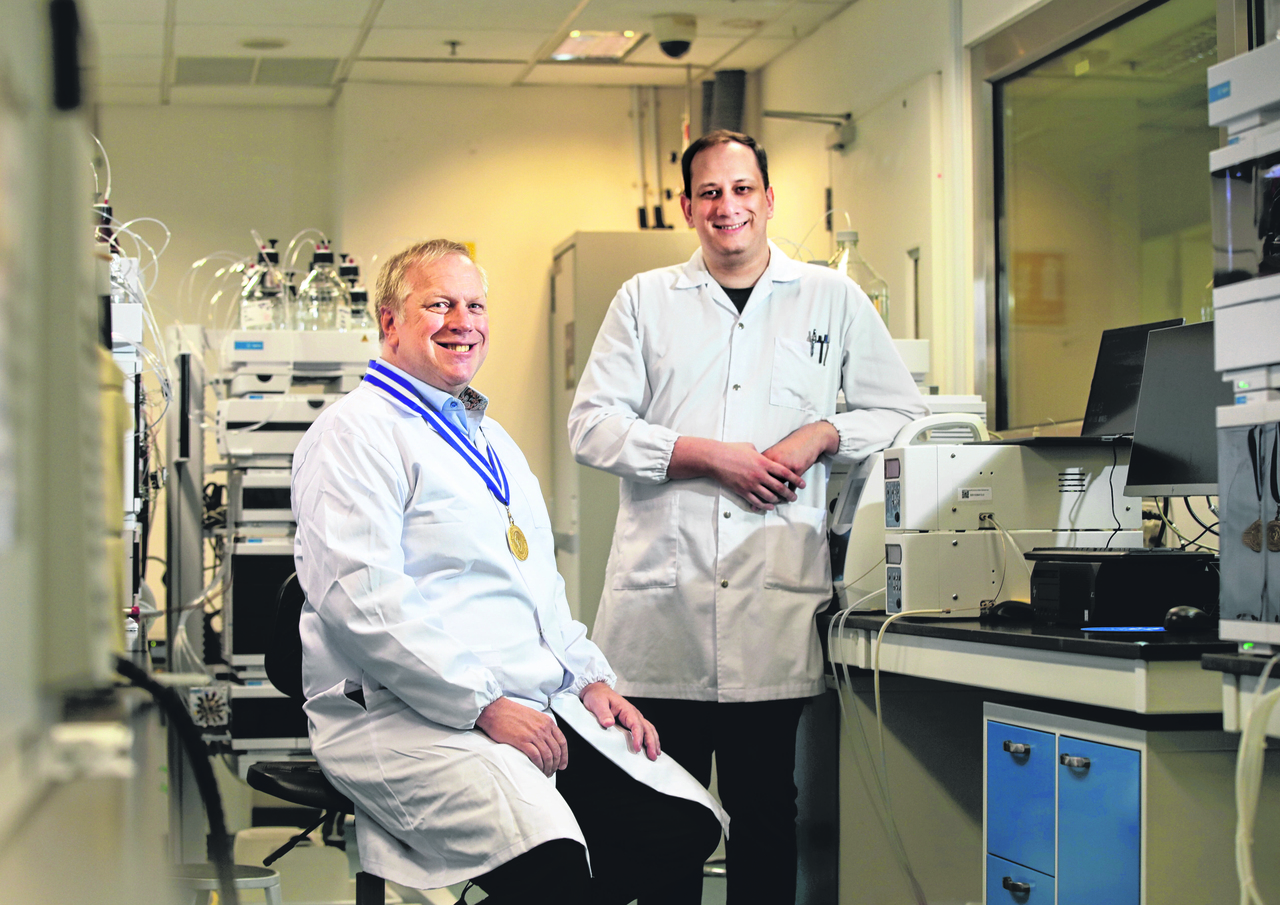NTU scientists discover 'cure' for asthma in dust found in rural farms
Sign up now: Get ST's newsletters delivered to your inbox

NTU's Nanyang Environment and Water Research Institute executive director Shane A. Snyder (left) and Mr Mauricius Marques Dos Santos.
ST PHOTO: GIN TAY
Follow topic:
SINGAPORE - For years, scientists in the United States noticed that children raised on farms and exposed to a diverse range of allergens were generally less predisposed to asthma and other forms of allergies compared with those growing up in cities.
But one particular group intrigued them - the Amish community, a traditionalist Christian group largely living in the farming belts of Pennsylvania and Ohio.
Researchers found that children raised in these communities had one of the lowest rates of asthma, even when compared with children raised on other farms.
The scientists now believe Amish children could hold clues to how asthma and other types of allergies could be prevented.
Recent studies found that the prevalence of allergies and associated diseases has increased over the years.
More than 30 per cent of children worldwide have allergies, and around 10 per cent of them have asthma and allergic rhinitis, which often leaves sufferers with chronic runny and sometimes blocked noses.
In Singapore, asthma's impact on the economy - in healthcare and other costs - was estimated at US$33.93 million in 1992. The current projection is that it will cost the economy US$1.5 billion (S$2 billion), according to two separate local studies.
The Amish have long been known for preferring traditional farm life and shunning modern technology.
In 2016, a study published in the New England Journal of Medicine suggested that Amish children had their immune systems bolstered by dust found in their homes, which contained microbes from farm animals such as cows. Their homes are often located near animal barns.
Scientists from Singapore's Nanyang Technological University (NTU) took the research a step further and identified the precise chemical compounds present in dust that are responsible for protection against asthma in children.
Dr Shane Snyder, who is the executive director of NTU's Nanyang Environment and Water Research Institute (Newri), and his team have identified four chemical compounds.
One of the compounds has been found to be effective in preventing asthma when tested on human lung cell cultures.
The chemical compounds were not present in animals from industrial farms, he noted.
"It appears that the animals living in these rural farms are not under stress, and are maybe producing different chemicals compared with animals which are under stress," said Dr Snyder.
Mr Mauricius Marques Dos Santos, a researcher at Newri who is working with Dr Snyder on the project, noted that when various treatments are given to animals in industrial farms - such as feeds and antibiotics - these change their microbiome, which eventually leads to chemical changes in the proteins within their bodies.
"When these molecular changes occur in animals, they also affect humans when we come into contact with the animals or their products. These original, unaltered molecules are the ones that are able to offer some protection against asthma and allergies," he added.
The team is now looking at how the chemical compound can be replicated and mass-produced synthetically as a potential drug therapy, said Dr Snyder.
Plans are also under way to test the other chemical compounds for potential use in asthma and allergy prevention.
To determine whether these chemical compounds are also present in other rural farms around the world, environmental samples will be taken from farms in South-east Asia and South America, said Dr Snyder.
He added that the bulk of previous research was conducted in the US and Europe.
Dr Snyder said that in the past, scientists had assumed the lower incidence rates of asthma among farm children was the result of genetics, which explained why some were more predisposed to asthma and allergies than others.
But discoveries along the way pointed to the presence of chemical compounds - which suggests a possible "cure" for asthma.
"This has far-reaching human health impacts," said Dr Snyder.
For more than two decades, Dr Snyder's research has been focused on water quality, treatment and sustainability.
He was recently awarded the prestigious Clarke Prize by the National Water Research Institute in the US, in recognition of his contributions to water science and technology which have helped to solve real-world problems.
Dr Snyder has been developing and refining methodologies for over two decades - where environmental contaminants or chemicals are extracted and evaluated using human or animal cell cultures.
This allows researchers to mimic the effect of the chemicals on human or animal cells, and give an early indication on whether it could potentially be toxic.
Recently, Dr Snyder started looking at microplastics found in the ocean, which either come from wastewater discharge or are disposed directly as litter.
As these microplastics are subsequently ingested by fish and other marine organisms, Dr Snyder and his team discovered that some chemicals leached from microplastics could mimic the role of oestrogen.
These oestrogenic effects are linked with developmental and reproductive problems which could cause adverse effects in animals.
Dr Snyder's research on the effects of oestrogen dates back to the 1990s, when he was acclaimed as the first researcher in North America to identify the toxic impacts of both natural and synthetic oestrogen in wastewater on fish.
Beyond the direct toxic impacts of microplastics on fish, Dr Snyder is also evaluating the role of microplastics in transporting toxic materials, especially when they bind with certain environmental pollutants.
"This could have significant impacts on the ecosystem and biodiversity," he added.

